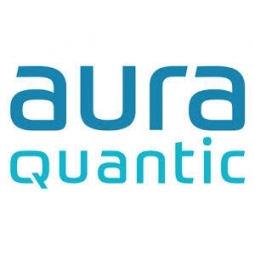Technology Category
- Infrastructure as a Service (IaaS) - Public Cloud
- Networks & Connectivity - NFC
Applicable Industries
- Equipment & Machinery
- Finance & Insurance
Applicable Functions
- Product Research & Development
- Quality Assurance
Use Cases
- Inventory Management
- Leakage & Flood Monitoring
Services
- System Integration
- Testing & Certification
About The Customer
Fundación Séneca is a Science and Technology Agency in the Region of Murcia, Spain. It belongs to the regional public sector and was established in 1996 to aid in the development and implementation of programs promoting research in the Region of Murcia, as well as to help develop the capabilities of its science, technology, and innovation systems. The foundation contributes to the planning, implementation, and monitoring of regional policies on research and innovation and to the definition of new management models. It promotes support programs for research talent, the generation and evaluation of scientific and technical knowledge, researcher mobility, and the dissemination of scientific culture, under the criteria of cooperation and internationalization.
The Challenge
Fundación Séneca, a Science and Technology Agency in the Region of Murcia, was facing significant challenges with its existing system, EIS software. The system was largely manual, lacking automation and control over records. Document management was not integrated, and any additional documentation had to be physically handed in, making the process cumbersome and inefficient. Information retrieval was complicated due to the variety of applications it could be obtained from, leading to an overproduction of paper documentation. The main challenge that arose during the project was the integration with three institutional systems and the accounting program, an ad hoc program for the Fundación Séneca that managed the accounting and payment forecasts.
The Solution
In 2007, Fundación Séneca began an assessment of several BPM suites to improve its organizational processes. The requirements included full record tracking, a solution to the document management problem, easy integration with other applications, real-time data access, centralization of applications, online administrative procedures and documentation register, and monitoring of payment forecasts generation and management. The AuraQuantic BPM suite was chosen for its ability to meet these requirements. It provided a dashboard for managers to view real-time data about payments, enabling effective decision-making. The documentation register and document management were embedded in the process, eliminating the need for supervision. The incorporation of the digital signature in administrative documents allowed applicants to complete administrative tasks online, eliminating the need to present documentation at the headquarters.
Operational Impact
Quantitative Benefit

Case Study missing?
Start adding your own!
Register with your work email and create a new case study profile for your business.
Related Case Studies.

Case Study
Smart Water Filtration Systems
Before working with Ayla Networks, Ozner was already using cloud connectivity to identify and solve water-filtration system malfunctions as well as to monitor filter cartridges for replacements.But, in June 2015, Ozner executives talked with Ayla about how the company might further improve its water systems with IoT technology. They liked what they heard from Ayla, but the executives needed to be sure that Ayla’s Agile IoT Platform provided the security and reliability Ozner required.

Case Study
IoT enabled Fleet Management with MindSphere
In view of growing competition, Gämmerler had a strong need to remain competitive via process optimization, reliability and gentle handling of printed products, even at highest press speeds. In addition, a digitalization initiative also included developing a key differentiation via data-driven services offers.

Case Study
Predictive Maintenance for Industrial Chillers
For global leaders in the industrial chiller manufacturing, reliability of the entire production process is of the utmost importance. Chillers are refrigeration systems that produce ice water to provide cooling for a process or industrial application. One of those leaders sought a way to respond to asset performance issues, even before they occur. The intelligence to guarantee maximum reliability of cooling devices is embedded (pre-alarming). A pre-alarming phase means that the cooling device still works, but symptoms may appear, telling manufacturers that a failure is likely to occur in the near future. Chillers who are not internet connected at that moment, provide little insight in this pre-alarming phase.

Case Study
Premium Appliance Producer Innovates with Internet of Everything
Sub-Zero faced the largest product launch in the company’s history:It wanted to launch 60 new products as scheduled while simultaneously opening a new “greenfield” production facility, yet still adhering to stringent quality requirements and manage issues from new supply-chain partners. A the same time, it wanted to increase staff productivity time and collaboration while reducing travel and costs.

Case Study
Integration of PLC with IoT for Bosch Rexroth
The application arises from the need to monitor and anticipate the problems of one or more machines managed by a PLC. These problems, often resulting from the accumulation over time of small discrepancies, require, when they occur, ex post technical operations maintenance.

Case Study
Data Gathering Solution for Joy Global
Joy Global's existing business processes required customers to work through an unstable legacy system to collect mass volumes of data. With inadequate processes and tools, field level analytics were not sufficient to properly inform business decisions.







